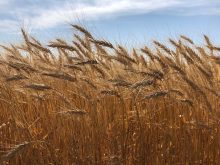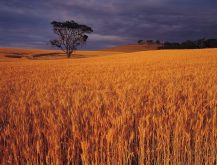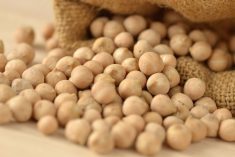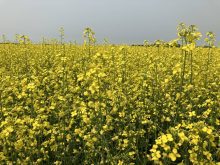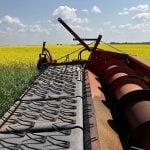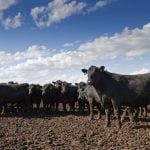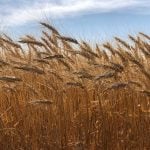A new bactericidal mode of action has picked up approval for control of fire blight in apple and pear crops.
U.S. ag chem firm Arysta LifeScience last week launched Kasumin bactericide in Canada, and has also picked up federal registration for its use to suppress bacterial spot and bacterial stem canker in tomato and pepper crops.
Fire blight "can spread fast under the right conditions and cause severe damage in susceptible apple varieties," the company said. "Concern is growing that there are not enough effective tools available to control fire blight."
Read Also

AAFC makes few changes to November S/D report
Agriculture and Agri-Food Canada made only a handful of alterations for its November report on principal field crops. The only changes AAFC made were with all wheat and durum exports plus domestic use for all wheat and corn in the estimates released on Nov. 24. The report had been initially scheduled for Nov. 19, but AAFC said they chose to delay it until after the United States Department of Agriculture issued its November supply and demand estimates following the U.S. government shutdown.
Kasumin’s control of fire blight extends to streptomycin-resistant bacteria isolates in apples and pears, the company said, and the product carries no "cross-resistance" to other bactericides.
Kasumin is also now registered for use in greenhouses on fruiting vegetable crops, the company said.
Kasugamycin, the product’s active ingredient, features a "unique mode of action different from other bactericides, making it an effective resistant management tool," the company said in its release.
Apart from its use in the pome fruit market, "tomato and pepper growers also are looking for new products to help manage bacterial disease infection," Arysta marketing manager Mark McLear said in the same release.
Growers can rotate Kasumin with other fungicides and also may tank-mix with other approved formulations, "giving them more flexibility to manage bacterial spot and stem canker as the growing season progresses," McLear said.
While the product is new to the Canadian market, Arysta said, it was discovered in Japan in 1963, has been used commercially since 1965, and today is registered for use in eight countries.
Related story:
New Canadian pear named ‘Harovin Sundown,’ Feb. 20, 2008



